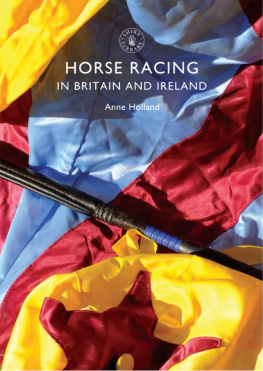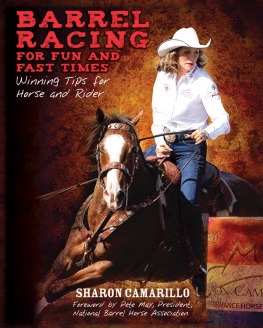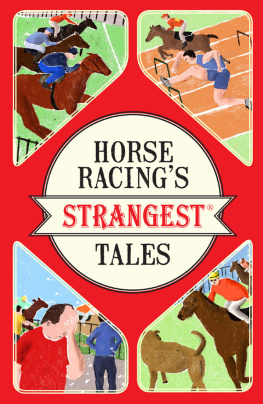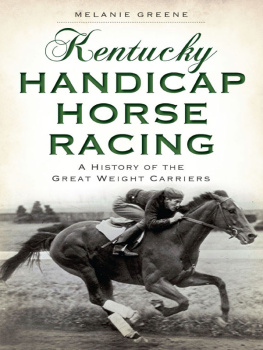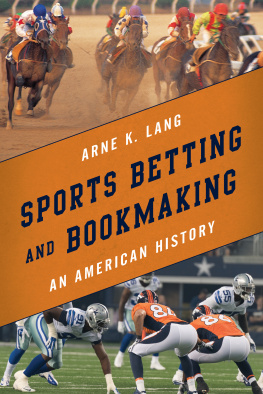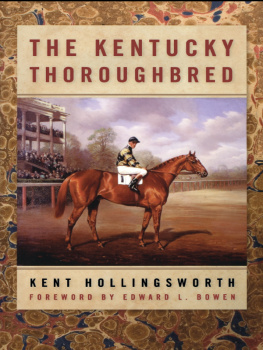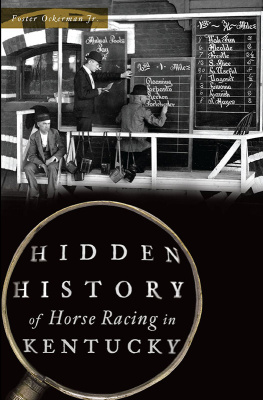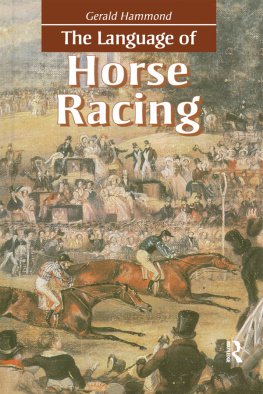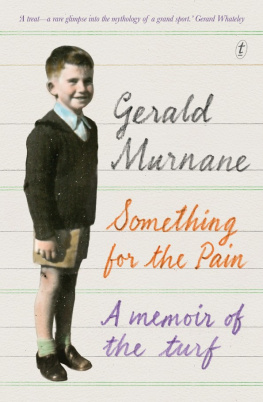Title Page
101 INTERESTING FACTS ON THE HISTORY OF HORSE RACING
By
Tony Byles
Publisher Information
First published in 2014 by Apex Publishing Ltd
12A St. Johns Road, Clacton on Sea, Essex
CO15 4BP, United Kingdom
www.apexpublishing.co.uk
Please email any queries to Chris Cowlin:
mail@apexpublishing.co .uk
Digital edition converted and distributed in 2015 by
Andrews UK Limited
www.andrewsuk.com
Copyright 2014 Tony Byles
The author has asserted his moral rights
Cover image: Famous Pictures and Features Agency
All rights reserved. This book is sold subject to the condition, that no part of this book is to be reproduced, in any shape or form. Or by way of trade, stored in a retrieval system or transmitted in any form or by any means, electronic, mechanical, photocopying, recording, be lent, re-sold, hired out or otherwise circulated in any form of binding or cover other than that in which it is published and without a similar condition, including this condition being imposed on the subsequent purchaser, without prior permission of the copyright holder.
Acknowledgements
It is inevitable that a book of this nature, with so many facts, could only be compiled with the help of others, and I would like to offer them my grateful thanks; as without their help this book would have been impossible. For most of us involved with the history of the thoroughbred racehorse, Im not sure where we would be without the help of Tim Cox and his wonderful library. Tim is always on hand to offer assistance. Im not sure how he finds the time, but somehow he manages. In addition to going through the text he provided details of the early Newmarket racecourses. Tim also works closely with David Oldrey at the Jockey Club. David is a diligent researcher, who kindly advised on the correct spellings of the racehorse Pot 8 os, and the colour chesnut, now recognised by the OED, over many years incorrectly spelt chestnut as per the spelling of the tree. My thanks also to Jim Hardiman. Jim, who has put many years of work into his website The Thoroughbred Racehorse, provided details of the early Royal Plates.
The foundation stallions are well known to all with the briefest knowledge of the thoroughbred, but details of the origins of the Byerley Turk and Godolphin Arabian are not so well known. A.J.Hibbard, a brilliant original researcher from our study group, provided me with details in order for me to pen a short essay on each. Chris Pitt, who has written a number of books on racing, and is a mine of information, provided a few obscure facts. More obscure facts came from Eric Graham. Eric got in touch with me shortly after the Running Rein book was published. He is a no-nonsense researcher who is intolerant of those who conjure up incorrect facts - so his assistance was welcomed.
During our correspondence Chris Pitt had expressed his concerns regarding the origins of the Grand National and referred me to John Pinfold. John has done considerable research on the National and kindly provided me with a paper he had written on its origins.
When I was doing the Running Rein book, I had a query on Gladiator, the sire of the illegal Derby winner, Maccabeus. Frank Mitchell, Editor of Bloodstock in the Blue Grass, had written about Gladiator in his excellent book Racehorse Breeding Theories. I contacted Frank and we have been in correspondence ever since. Frank provided the information on the American twins, the Puerto Rican star, Camarero, and the reasons for the defeats that Secretariat experienced.
My good friend and frequent racing companion Tony Morris also provided information on Camarero and the Hungarian twins that ran in the same race; and completed my list of mares that had produced a Derby and an Oaks winner.
I would also like to thank my colleagues on our historical site, bloodlines.net, for their agreement to use the information therein.
Finally I would like to thank my publisher Chris Cowlin for asking me to write this book. After the Running Rein book, I had no intention of putting pen to paper again - at least not in book form. But his request has proved to be a joyful experience, and has enabled me to discover things about the thoroughbred that I never knew.
Introduction
The sport of matching horses against each other is as mysterious in its origins as the evolutionary metamorphosis of the horse itself, from the fox-terrier sized animal of prehistoric times that roamed the steppes of Asia and plains of North America, to the magnificent racehorse, the so-called thoroughbred of today, described as one of Englands remarkable gifts to the world.
The thoroughbreds origins were probably in warfare, where fast horses were a necessity for communication, to support infantry, outflank and cut off enemy retreat. It was inevitable, then, that man would seek to breed faster horses that would perform well on the battlefield. It was a product of many different strains, reinforced by horses of eastern origin, which arrived in England as early as the 10 th century: Roger de Bellesme, Earl of Shrewsbury, imported Spanish stallions of Barb descent to his estate in Powisland; their excellence contributing to a nobler breed. It is probable that the breed was further improved by the introduction of fast Arabian stallions, brought back from the Crusades and bred with sturdy English mares.
Man did not set out to create the thoroughbred. His aim was to produce a faster horse and centuries of selective breeding derived from performances on the racecourse has produced a degree of uniformity which distinguishes him from all other breeds. There are, of course, differences in ability between the best and worst but when you see that proud, aristocratic appearance, that bold eye, the slender arched neck, the thoroughbred is easily identified.
Exactly when the thoroughbred became known as the thoroughbred is unknown. The OED refers to the 1790s, although it was referred to in an advertisement as early as 1738; and Lord Bristol made reference to throbred English horses in a letter to his son, Carr, in 1713.
There was a steady stream of eastern horses imported between the mid 17 th and 18 th centuries; many more, in fact, than made any impact on the creation of the thoroughbred, and even after whatever it was that happened that caused the shift to thoroughbred sires, these eastern horses continued to be imported. This would indicate that the thoroughbred gene pool was firmly established around the middle of the 18 th century, with only two more imported stallions (the Cullen Arabian and the Northumberland Arabian, alias the Leeds Brown Arabian) having offspring that appear in pedigrees of living thoroughbreds.
Since the mid 18 th century the thoroughbred has come a long way. Along the way we have seen some incredible, awe-inspiring marvels. They have captured the imagination of man, who has sought to try and breed an even better thoroughbred. Try is the optimum word. It is impossible to set out a plan to breed a horse, the likes of Man o War, Sea Bird, Secretariat or Frankel - they just seem to come along; and that is what makes it such a fascinating game.
Three centuries of this fascinating game has provided many interesting, and sometimes very strange stories and facts. Some will be familiar, and some unfamiliar. This is a chronological journey from the earliest days of racing to the present time, covering the great classic races, personalities, and most of all the central character to the great game - the thoroughbred racehorse.
The Facts
1. Horseracing in England has a long history; at least going back to Roman times - and probably before that. The first actual reference to a Sporting Calendar that recorded horse races appeared in the London Gazette of February 12-15, 1679, which gave notice that Mr. John Nelson kept a Register of all horse matches, foot matches, cock matches and bets, at the Groom Porters Office in Newmarket. No copies of Nelsons Calendars would appear to have survived, and it is probable that they only ever appeared in manuscript form. However, it is probable that John Nelson may well not have been the first chronicler of such matches, for in an old book A Dissertation of Horses by William Osmer, published in 1756; it states there were others who published accounts of horse racing over one hundred years before the first chroniclers, John Cheny, Reginald Heber and John Pond.
Next page

